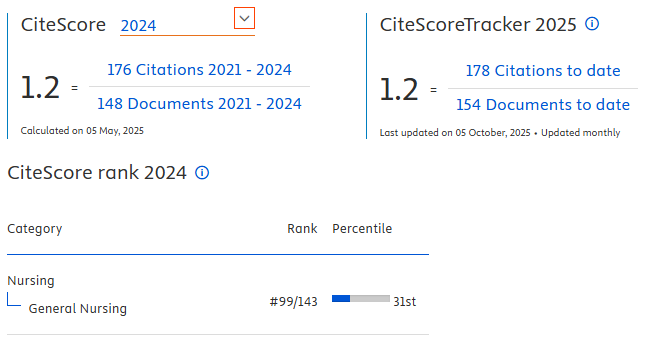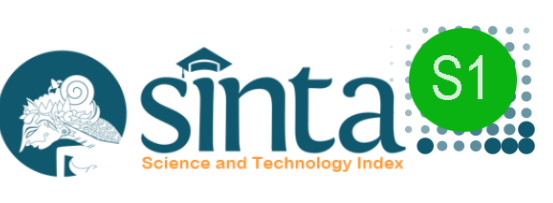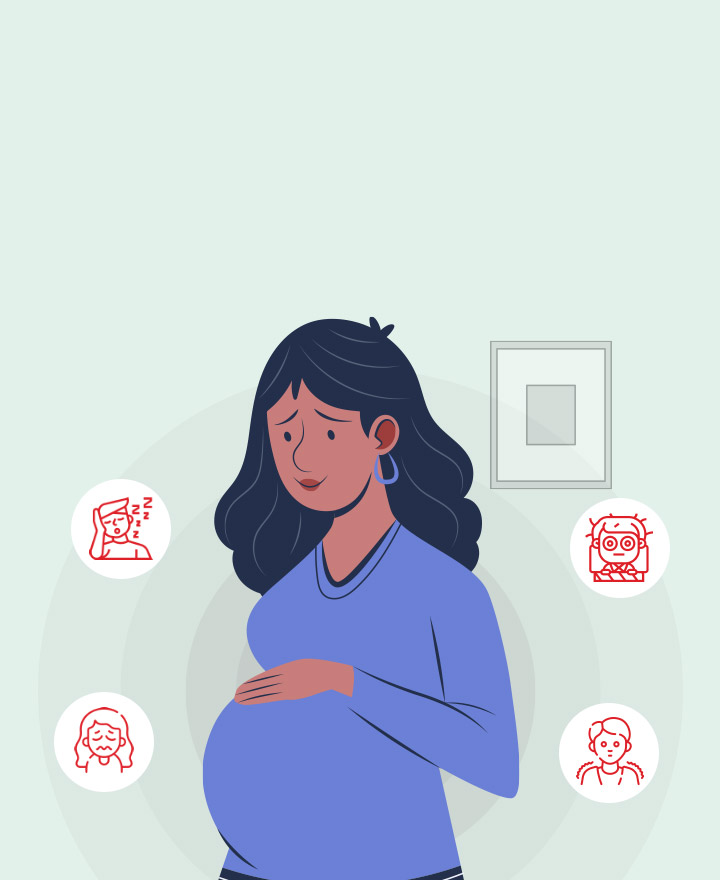Structural constraints and patient agency in diabetes self-management: a critical case study in a primary healthcare center in Indonesia

Downloads
Introduction: Effective self-management is essential for individuals with Type 2 Diabetes Mellitus (T2DM), yet patients in Indonesia often encounter persistent barriers. This study explores patients’ perspectives on the challenges they face as well as the perceived supports available within the primary healthcare system.
Methods: A qualitative case study approach, based on Yin’s methodology, was employed. Guided by Habermas’s theory of communicative action and Honneth’s theory of recognition, data were collected through in-depth interviews with 14 patients, 28 clinical observations of patient–provider encounters, and one focus group with five healthcare professionals. Participants were recruited from a suburban primary healthcare center in Indonesia using purposive sampling. Reflexivity and field notes were maintained throughout the data collection process. Data were analyzed using thematic qualitative analysis. Triangulation across data sources helped enhance credibility and trustworthiness.
Results: Five key themes emerged: (1) Medical dominance in care provision, (2) Communication gaps, (3) Regulation-centered care, (4) Care quality, and (5) Patient self-empowerment. These themes reveal systemic, structural, and interpersonal barriers that constrain effective diabetes self-management in primary care.
Conclusions: Understanding the lived experiences of patients with T2DM is critical to informing practice and policy. To overcome these barriers, a shift toward patient-centered care, improved communication, and more inclusive support systems is essential within Indonesia’s healthcare system.
Arifin, B. et al. (2020). ‘Diabetes is a gift from god’a qualitative study coping with diabetes distress by Indonesian outpatients. Quality of Life Research, 29(1), 109-125.
Baxter, P., & Jack, S. (2008). Qualitative case study methodology: Study design and implementation for novice researchers. The qualitative report, 13(14), 544 – 559
Carter, C. et al. (2023). “I don’t see the whole picture of their health”: a critical ethnography of constraints to interprofessional collaboration in end-of-life conversation in primary care. BMC Primary Care 24: 225
Cheng, Z. et al. (2025). Effectiveness of patient-centred care in self-management of type 2 diabetes: a systematic review and meta-analysis. BMC Health Services Research, 25(1), 1-11.
Claramita, M. et al. (2013) ‘Doctor–patient communication in Southeast Asia: a different culture?’, Advances in Health Sciences Education, 18, pp. 15–31.
Clarke, V., & Braun, V. (2014). Thematic Analysis. In T. Teo (Ed.), Encyclopedia of Critical Psychology (pp. 1947-1952). Springer New York. 10.1007/978-1-4614-5583-7_311
Coburn, D. (2015) ‘Vicente Navarro: Marxism, medical dominance, healthcare and health’, in The Palgrave Handbook of Social Theory in Health, Illness and Medicine. Springer, pp. 405–423.
Davis, T. C. et al. (2012). Diabetes Implementation of a Self-management Program in Resource Poor and Rural Community Clinics. Journal of primary care & community health, 3(4), 239–242. https://doi.org/10.1177/2150131911435673Form
Dewi. D. et al. (2013). Person-centred care in the Indonesian health-care system. International Journal of Nursing Practice 20 (6) : 616-622
Fithriyah, N., Pujilestari, C., & Ng, N. (2023). Exploring inequalities in use, quality, and outcome of a diabetes management program in Indonesia: A mixed-methods study. Health Equity, 7(1), 393–401. https://doi.org/10.1089/heq.2022.0122
Frantz, J., Schopp, L. and Rhoda, A. (2021) Self-management in chronic illness: principles, practice, and empowerment strategies for better health. Springer.
Habermas, J. (1985). The theory of communicative action, lifeworld and system: A critique of functionalist reason (T. McCarthy, Trans.; Vol. 2). Beacon Press.
Hickmann, E., Richter, P. and Schlieter, H. (2022) ‘All together now – patient engagement, patient empowerment, and associated terms in personal healthcare’, BMC Health Services Research, 22(1), pp. 1–11. doi: 10.1186/s12913-022-08501-5.
Hoppenot, C. et al. (2022) ‘Gaps in patient-physician communication at the time of malignant bowel obstruction from recurrent gynecologic cancer: a qualitative study’, Supportive Care in Cancer, 30, pp. 367–376.
International Diabetes Federation (IDF). (2024). IDF Diabetes Atlas (11th ed.). IDF. https://idf.org
Jeffrey, D. I. and Jeffrey, D. I. (2020) ‘Experiencing Empathy in the Patient-Doctor Relationship’, Empathy-Based Ethics: A Way to Practice Humane Medicine, pp. 43–61.
Jensen, K. et al. (2020). Reward and empathy in the treating clinician: the neural correlates of successful doctor–patient interactions. Translational psychiatry, 10(1), 17.
Khoe, L. C. et al. (2020) ‘The implementation of community-based diabetes and hypertension management care program in Indonesia’, PLOS ONE, 15(1), p. e0227806. Available at: https://doi.org/10.1371/journal.pone.0227806.
Lafont, C. (2018) ‘Heidegger and the Frankfurt School’, in The Routledge Companion to the Frankfurt School. Routledge, pp. 282–294.
Looman, N. et al. (2022) ‘Exploring power dynamics and their impact on intraprofessional learning’, Medical Education, 56(4), pp. 444–455. doi: 10.1111/medu.14706.
Fritz, M. et al. (2024). Effectiveness of community-based diabetes and hypertension prevention and management programmes in Indonesia and Viet Nam: a quasi-experimental study. BMJ Global Health, 9(5).
Kishimoto, M. et al. (2025) ‘Enhancing communication skills in diabetes care: an observational study regarding the impact of role-playing training for medical staff’, BMC Medical Education, 25(1). doi: 10.1186/s12909-025-06821-8.
Krisnadewi, K. I. et al. (2024). Implementation preventive program for diabetic mellitus (PROLANIS) at Community Health Center in Indonesia: A qualitative study. Journal of Applied Pharmaceutical Science, 15(1), 153-161.
Mulyana, D. et al. (2019) ‘Communication Barriers between Medical practitioners and Patients from Medical Practitioners’ Perspective’, Pertanika Journal of Social Sciences and Humanities, 27(4), pp. 2797–2811.
Murugesu, L. et al. (2022) ‘Challenges and solutions in communication with patients with low health literacy: Perspectives of healthcare providers’, PLoS ONE, 17(5 May), pp. 1–16. doi: 10.1371/journal.pone.0267782.
Napiwodzka, K. (2021) ‘Communicative action and practical discourse to empower patients in healthcare-related decision making’, Acta Universitatis Lodziensis. Folia Philosophica. Ethica-Aesthetica-Practica, 1(38), pp. 81–99. doi: 10.18778/0208-6107.38.04.
Nolte, E. and McKee, M. (2008) ‘one’, Caring For People With Chronic Conditions: A Health System Perspective: A Health System Perspective, p. 1.
Palumbo, R. (2017) The bright side and the dark side of patient empowerment: Co-creation and co-destruction of value in the healthcare environment. Springer.
PERKENI. (2021). Penatalaksanaan DM Sesuai Konsensus PERKENI 2015. PB. PERKENI.
Permana, H. et al. (2022) ‘Diabetes mellitus patients in Indonesia: management in a tertiary hospital compared to primary health care’, Universa Medicina, 41(2), pp. 157–168.
Pradipta, I. S. et al. (2025). How Does Indonesian Chronic Disease Patient Adhere to Their Treatment? A Cross-Sectional Analysis of 11,408 Subjects. Patient preference and adherence, 173-184.
Putri, L. P., Mawarni, D., & Trisnantoro, L. (2020). Challenges of shifting diabetes mellitus care from secondary-to primary-level care in urban and rural districts: a qualitative inquiry among health providers. Journal of Primary Care & Community Health, 11, 2150132720924214.
Puspitasari. et al. (2023). The Emergent Literacy Activities Through the Storytelling Method with Flashcard Media for Early Childhood Education. Journal of Digital Learning and Education 3(01) : 32- 39
Rahayu, S. A. et al. (2024) ‘Does power distance in healthcare teams linked to patient satisfaction? A multilevel study of interprofessional care teams in a referral hospital in Indonesia’, BMC Health Services Research, 24(1), pp. 1–8. doi: 10.1186/s12913-023-10534-3.
Ravn Jakobsen, P. et al. (2021) ‘The gap between women’s needs when diagnosed with asymptomatic osteoporosis and what is provided by the healthcare system: a qualitative study’, Chronic illness, 17(1), pp. 3–16.
Rifli, Naurah Assyifa & Yulianah. (2025). Narrative effectiveness in digital health advocacy: Lessons learned from Casemas.id’s strorytelling initiative in enhancing national health promotion strategies. Journal of Community Empowerment for Health 8 (2): 81-86
Scambler, G. and Britten, N. (2013) ‘System, lifeworld and doctor–patient interaction: Issues of trust in a changing world’, in Habermas, critical theory and health. Routledge, pp. 45–67.
Schmitz, V. (2019). Axel Honneth and the tradition of radical reformism. In V. Schimtz (Ed 1), Axel Honneth and the Critical Theory of Recognition (1st ed. 2019. Ed). Palgrave Macmillan. https://doi-org.ezproxy.flinders.edu.au/10.1007/978-3-319 91980-5
Shah, M. K. et al. (2024). Diabetic patients’knowledge and related factors towards insulin therapy: A systematic review. Journal of Nursing Reports & Clinical Practice.
Sharkiya, S. H. (2023) ‘Quality communication can improve patient-centred health outcomes among older patients: a rapid review’, BMC Health Services Research, 23(1), pp. 1–14. doi: 10.1186/s12913-023-09869-8.
Sindhvananda, W. (2011) ‘Enhancing physicians’ communication skills is not enough: an approach by Habermas social theories’, South-East Asian Journal of Medical Education, 5(2).
Soyoon, K., & Ekaterina, M. (2022). From compliance to adherence in diabetes self-care: Examining the role of patient’s potential for mindful non-adherence and physician-patient communication. American journal of health promotion, 36(7), 1094-1103.
Sun, H. et al. (2022) ‘IDF Diabetes Atlas: Global, regional and country-level diabetes prevalence estimates for 2021 and projections for 2045’, Diabetes Research and Clinical Practice, 183. doi: 10.1016/j.diabres.2021.109119.
Suwito, W., et al. (2023). Medication adherence and glycemic control among patients with type 2 diabetes mellitus in Indonesia. Heliyon, 9(8), e18152. https://doi.org/10.1016/j.heliyon.2023.e18152
Tates, K. et al. (2002) ‘I’ve come for his throat: roles and identities in doctor-parent-child communication. Chlid: Care, Health and Development 28(1): 109- 116
Terry, G. et al. (2017). Thematic analysis. The SAGE handbook of qualitative research in psychology, 2(17-37), 25.
Walseth, L. T., & Schei, E. (2011). Effecting change through dialogue: Habermas’ theory of communicative action as a tool in medical lifestyle interventions. Medicine, Health Care and Philosophy, 14(1), 81-90.
Widyastuti, R. A., et al. (2021). Factors influencing medication-taking behavior among patients with type 2 diabetes in Indonesia: A qualitative study. Patient Preference and Adherence, 15, 2103–2114. https://doi.org/10.2147/PPA.S324693
Yin, R. K. (2017) Case study research and applications: Design and methods. Sage publications.
Zygmont, A. et al. (2023) ‘Uplifted by Dancing Community: From Physical Activity to Well-Being’, International Journal of Environmental Research and Public Health, 20(4). doi: 10.3390/ijerph20043535.
Copyright (c) 2025 Jurnal Ners

This work is licensed under a Creative Commons Attribution 4.0 International License.
Authors who publish with Jurnal Ners agree to the following terms:
- Authors transfer the Copyright and grant Jurnal Ners the right of first publication with the work simultaneously licensed under a Creative Commons Attribution 4.0 International License that allows others to remix, adapt and build upon the work with an acknowledgment of the work's authorship and of the initial publication in Jurnal Ners.
- Authors are permitted to copy and redistribute the journal's published version of the work (e.g., post it to an institutional repository or publish it in a book), with an acknowledgment of its initial publication in Jurnal Ners.
Jurnal Ners requires a formal written declaration and transfer of copyright from the author(s) for each article published. We, therefore, ask you to complete and return this form, retaining a copy for your own records. Your cooperation is essential and appreciated. Any delay will result in a delay in publication. The form can be downloaded HERE.
































